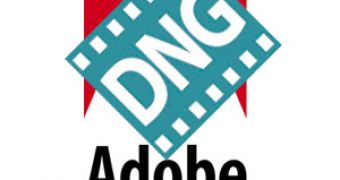Announced at NAB 2008, Adobe's bold and intelligent move deeper into the video production industry will prove to have positive effects for the adoption of Adobe Premiere Pro and Adobe After Effects by video professionals. It also promises to at least begin to solve problems of image degradation and workflow compatibility across software platforms, and throughout stages in the migration of footage from system to system in the production process. The key to this is replacing the myriad of more or less compressed formats with an open standard for RAW acquisition.
The standard would make use of technology already available in Adobe's Digital Negative Specification (DNG) RAW format for photography. The exact requirements of a similar format for digital cinema are to be determined in collaboration with film and digital camera industry leaders Panavision, Silicon Imaging, Dalsa, Weisscam and Arri.
On the software front, it's young and flexible software companies like Iridas (maker of Speedgrade, a mid-priced non-destructive color correction software), the Foundry (their flagship program is Nuke, one of the most powerful and difficult to use node-based compositors to be found in the film industry, and one of the few offering support for 3d footage) and Cineform (theirs is the fastest growing codec for compressed digital intermediate video files that hold up through a multi-gen postproduction workflow). The key here is that none of these companies are direct competitors to Adobe (at least not yet), and a successful partnership will most likely leave Adobe's rivals standing on the outside of a good chunk of the digital cinema industry.
"By taking a proactive role and working collaboratively with leading digital cinema manufacturers, Adobe is helping to define an industry-standard approach that benefits the entire filmmaking ecosystem. Filmmakers will be able to adopt digital cinema cameras with confidence, and camera manufacturers will be able to provide specialized functionality while ensuring instant file format compatibility with existing workflows," said Jim Guerard, vice president of Dynamic Media at Adobe.
For example, in today's production universe, a feature film or a commercial might travel from the camera to a director's editing suite, to a special effects house and then to a color grading facility, which may or may not be the project's final stop. This means footage will be encoded at the very least four or five separate times, and that spells disaster for image quality. The simplest answer to this is centralizing production, but it's also the least likely solution in a modern workflow, which can involve several departments working in the same building, but as more often is the case, a host of production houses exchanging footage over the internet.
Stu Maschwitz, formerly a visual effects artist at Industrial Light and Magic (think George Lucas and Star Wars), and co-founder of visual effects house The Orphanage, is a vocal critic of the current situation: "I've worked on movies where the DI [editor's note: digital intermediate, the last part of the post-production process] so radically altered the look of our effects work that I wound up flying to the DI house days before our deadline to scribble down notes about which aspects of which shots should be tweaked to survive the aggressive new look. I've worked on movies that have been graded three times-once as dailies were transfered for the edit, once in HD for a temp screening, and again for the final DI. Please trust me when I say that the current situation is broken. We need an industry leader to step in and save us from our own stupidity."
While most editing suites are looking to implement support for simultaneous online collaboration, Adobe is taking it a step further, developing "an open, public, and enduring standard that can be adopted throughout the production pipeline" and would "provide the foundation for an editing workflow that would allow filmmakers to use the highest quality source material". Ultimately, if Adobe creates a RAW standard for digital cinema, the already visible movement away from expensive non-linear editors like Avid will undertake a heavy shift towards Adobe's own editing suite. But is this enough to give Adobe the upper hand, and is it all that the film and television industry requires?
As it stands, there is also a plan to provide support for 'proprietary metadata' - basically information added to the image by a camera manufacturer that wants to differentiate its product in some way from that of other manufacturers. What is much more important to filmmakers, and to Adobe's success, is implementation of a different kind of metadata.
Cut to NAB 2008, same time and place. The Academy of Motion Pictures and the American Society of Cinematographers are launching the "Common File Format for Look-up Tables". A look-up table is metadata about color appearance. With over 40 LUTs in existence, governing various color-spaces from proprietary software to film stocks, the need for an industry standard is even more pressing than in the case of video formats.
"The film industry has a tremendous need right now for an open standard for communicating color grading information-a Universal Color Metadata format," says Maschwitz, pointing out that keeping the footage itself intact throughout a standard acquisition process and a standard color space is only half the problem. There needs to be a way of communicating the color decisions of people working on a piece of video without degrading the video itself - literally keeping it RAW.
"Result? The effects artist is no longer working blind. The director and studio get to approve shots as they will actually look in the movie rather than in a vacuum. Everyone gets their work done faster and the results look better. All of this informed by a direct line of communication between the person who originally created the images (the cinematographer) and the person who masters them (the colorist)," concludes Stu.
These are the three steps that Adobe needs to undertake in order to fix the film industry and position itself as the new leader in digital cinema editing. Create a RAW cinema format, work towards a standard LUT, and implement a color-decision-list that does not get encoded into the footage, keeping image quality untainted no matter how complicated collaborative workflows might get.

 14 DAY TRIAL //
14 DAY TRIAL // 

